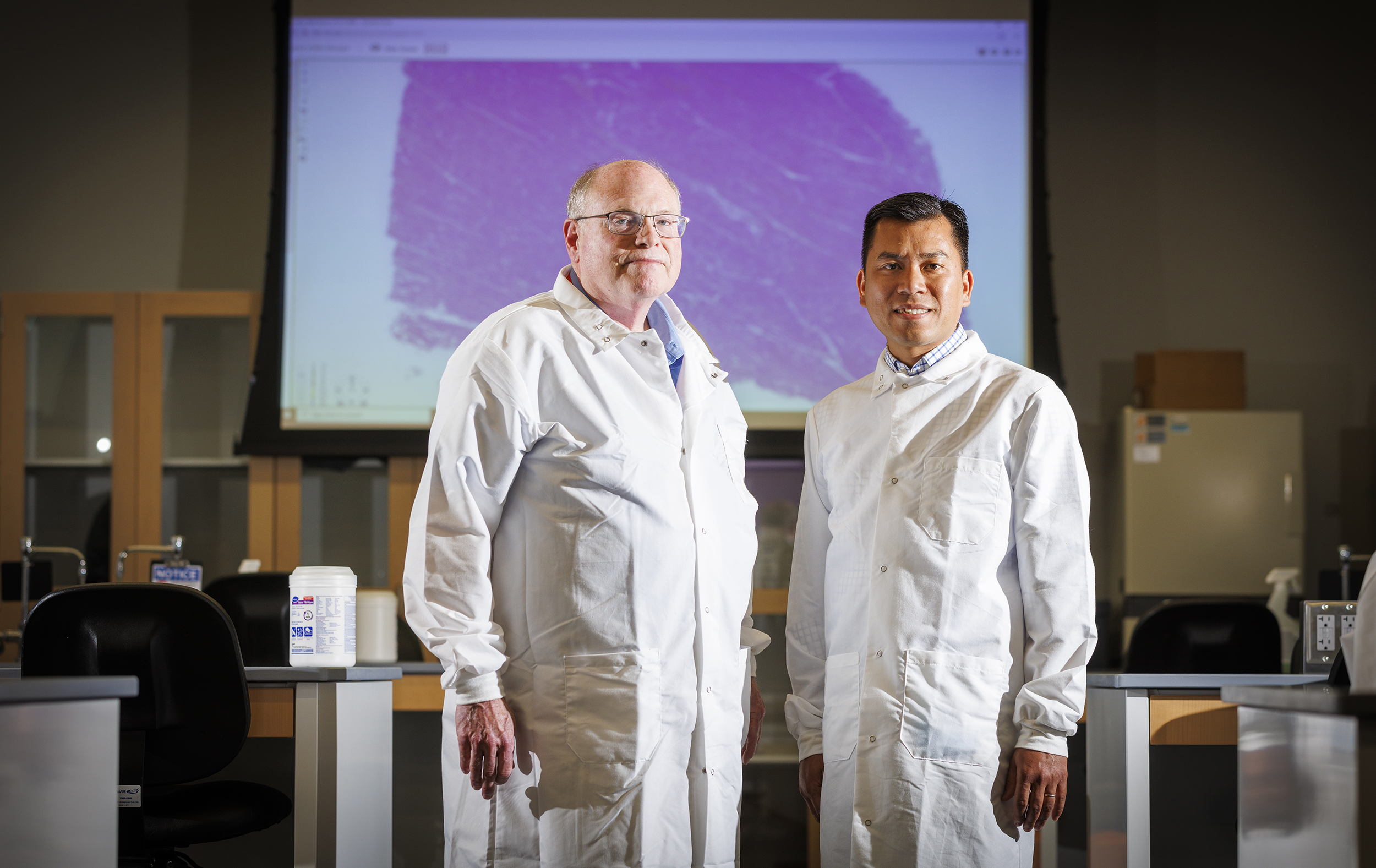
As a teenager decades ago on his family’s swine farm in Vietnam, Hiep Vu saw firsthand the benefits of vaccinating livestock. His parents had gradually increased the size of their operation, and when they inoculated their animals, the positive results struck Vu.
“It amazed me at that time how vaccines work,” said Vu, now an assistant professor of animal science at the University of Nebraska–Lincoln. He earned a degree in Vietnam to become a veterinarian, but his scientific interests broadened into animal-focused immunology.
“I started to be interested in working on vaccines,” he said, “because that is the most cost-effective way to protect from infectious diseases.”
At Nebraska, Vu received his master’s degree in veterinary science and, in 2013, a doctorate in integrative biomedical sciences. He is now an expert in swine viruses. He is also a faculty member with the Nebraska Center for Virology and an associate editor for the Journal of Medical Virology. For his extensive research into porcine reproductive and respiratory syndrome virus, he received two patents connected to vaccine development.
Now, Vu is embarking on a collaborative, federally funded project to fill in a major knowledge gap that has hindered development of a vaccine for African swine fever. ASF stands out for its extraordinary mortality. The disease doesn’t affect humans, but when it affects a swine supply, only a handful of pigs survive.
Experience with the disease this century shows that the fallout for swine production can be catastrophic. When ASF struck parts of Asia in 2018, South Korea wound up destroying 47,000 pigs. China, the world’s largest swine producer, culled a staggering number of the animals — an estimated 225 million. In all, ASF reduced the world’s pig supply by nearly 25% between 2018 and 2019.
Though ASF has been studied for a century, development of an effective vaccine has long been stymied by a lack of complete information on key aspects of the disease. Creating a vaccine requires identifying the full set of viral proteins that stimulate the pig’s immune system to develop antibodies, for example. But due to the complexity of the virus, researchers so far have inventoried only a small number of those proteins.
That knowledge gap is precisely the one Vu and his research partners will seek to fill with the support of a $770,000, three-year grant from the U.S. Department of Agriculture’s National Institute of Food and Agriculture. A key partner in the project is Scott McVey, professor and director of Nebraska’s School of Veterinary Medicine and Biomedical Sciences and associate dean for the Nebraska/Iowa State University Professional Program in Veterinary Medicine.
Cataloging a pig’s protective proteins against ASF will require overcoming two obstacles, Vu said. The first is scientific: The ASF virus is large and complex, with about 170 genes compared to, for example, the 29 or so found in SARS-CoV-2, the virus that causes COVID-19. It takes time in the laboratory for a sophisticated analytical procedure to complete the comprehensive genetic identification.
The second obstacle is logistical.
“Because this is a high-consequence viral disease, the biosecurity is very stringent,” Vu said.
And because ASF isn’t found in the United States at present, samples from pigs infected with the virus are not readily available for research.
To solve those challenges, Vu and McVey are partnering with scientists at the Vietnam National University of Agriculture, as Vietnam is one of the Asian countries with an incidence of ASF. Through this international partnership, the Husker researchers have access to many samples collected from pigs that were infected with the most virulent strain of ASF virus. These samples are valuable for studying the pig’s immune responses to ASF viral infection.
The project will identify viral proteins that are immunogenic — that trigger the pig’s immune system to generate antibodies against ASF. Then, Vu said, the researchers “can compare among them to know which ones are relatively more immunogenic than the others.” By the end of the project, “We will have a complete picture of the pig’s antibody profile against ASF infection,” Vu said.
In so doing, he and his colleagues can remove a central obstacle to combatting one of the planet’s deadliest animal diseases. This may lead to improved diagnostic tools, as well as robust vaccine candidates.








